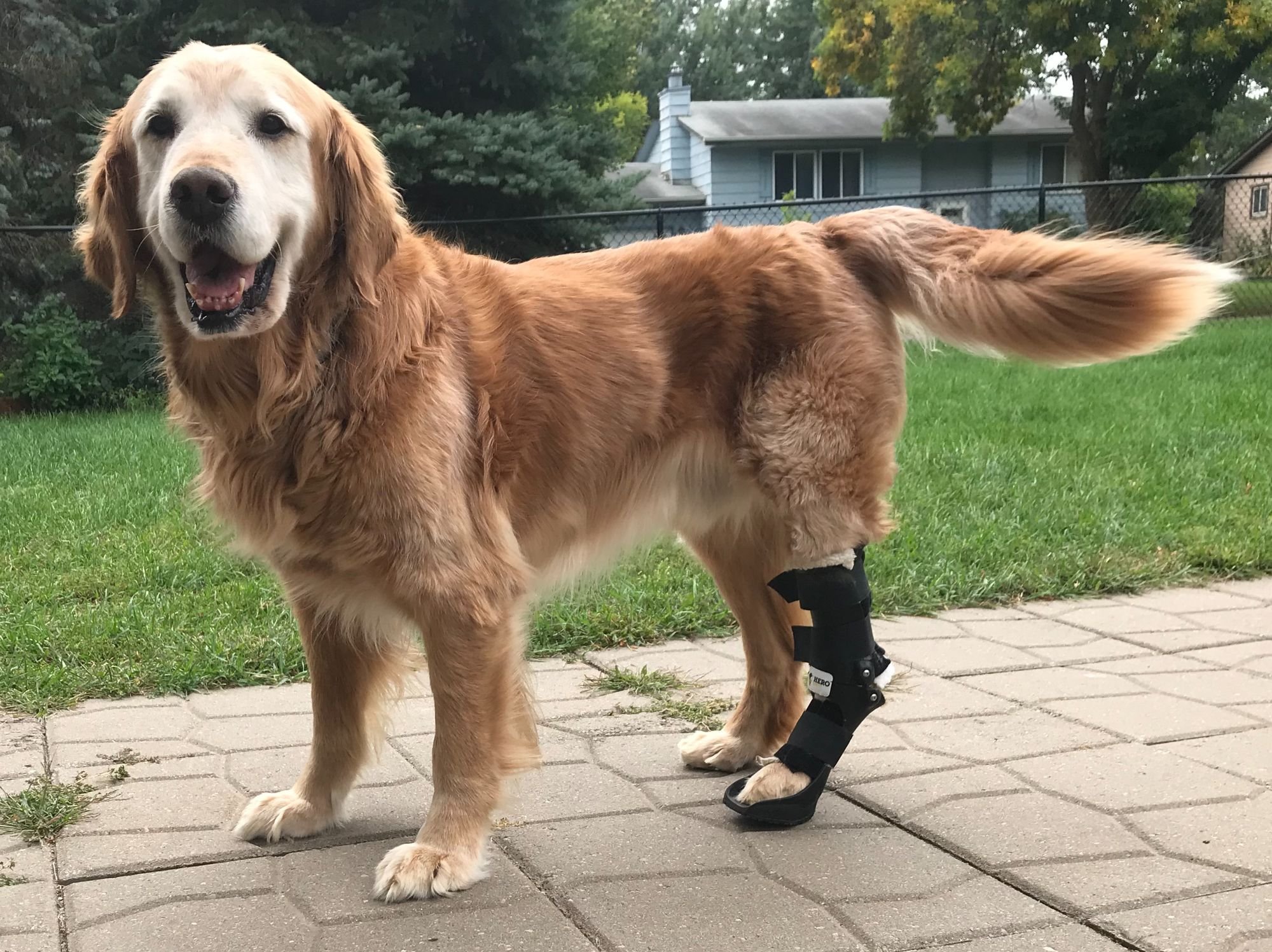Understanding Calcaneal Tendon Injuries in Dogs: Surgical and Non-Surgical Treatment Approaches with Physical Rehabilitation
Dr. Cara McNamee
Calcaneal tendon injuries, also known as Achilles tendon injuries, can affect our four-legged companions, leading to discomfort and limited mobility. As something that we have seen a number of recently, we’ll go over symptoms and treatment options for calcaneal tendon injuries in dogs, focusing on both surgical and non-surgical approaches, with an emphasis on physical rehabilitation.
The common calcaneal tendon, or Achilles tendon, is actually three tendons composed of the gastrocnemius, superficial digital flexor, and the conjoined tendons in a dog's hind limb that connects the calf muscles to the heel bone (calcaneus). Injuries to this tendon can occur due to various reasons, including sudden trauma, overuse, or degenerative conditions. Common causes include jumping, sudden stops, breed dispositions, or other medical conditions that can affect tendon strength.
Common symptoms include limping, difficulty bearing weight on the affected limb, swelling around the tendon, and potentially a dropped ankle. Given that it’s not a terribly common injury, it's essential to consult with a veterinarian for a proper diagnosis.
Veterinarians typically diagnose calcaneal tendon injuries through a combination of physical examination, palpation of the affected area, and imaging techniques like X-rays or ultrasound. Accurate diagnosis is crucial for developing an effective treatment plan tailored to the individual dog's needs.
Surgical Treatment:
In severe cases or complete tendon ruptures, surgical intervention may be necessary. Surgery aims to repair and reattach the tendon, promoting proper healing. Various surgical techniques exist, including sutures or grafts, and the choice depends on the specific nature of the injury. Post-surgery, a period of controlled rest with splinting or casting is essential to facilitate healing.
Non-Surgical Approaches:
For less severe injuries or cases where surgery may not be the best option, non-surgical treatments, combined with physical rehabilitation, can be effective. These approaches include rest, anti-inflammatory medications, and physical therapy.
Physical rehabilitation plays a vital role in the recovery process, regardless of whether surgical or non-surgical treatment is chosen. Rehabilitation exercises focus on improving range of motion, strengthening surrounding muscles, and promoting overall healing. Some common rehabilitation techniques include:
Range of Motion Exercises: Gentle stretching exercises help restore flexibility in the affected limb.
Therapeutic Exercises: Targeted exercises, such as controlled walking and controlled weight-bearing activities, aid in rebuilding muscle strength and tendon structural integrity.
Hydrotherapy: Water-based exercises reduce stress on the injured tendon while promoting mobility and strength.
Massage and Soft Tissue Mobilization: Hands-on techniques help alleviate muscle tension and promote blood flow to the injured area.
Calcaneal tendon injuries in dogs can significantly impact their quality of life, but with timely intervention and appropriate treatment, dogs can recover and regain normal function. Whether opting for surgical or non-surgical approaches, the integration of physical rehabilitation is key to a successful recovery. Always consult with a veterinarian to determine the best course of action for your furry friend's specific condition. With the right care and dedication, dogs can bounce back from calcaneal tendon injuries and enjoy an active, happy life.




